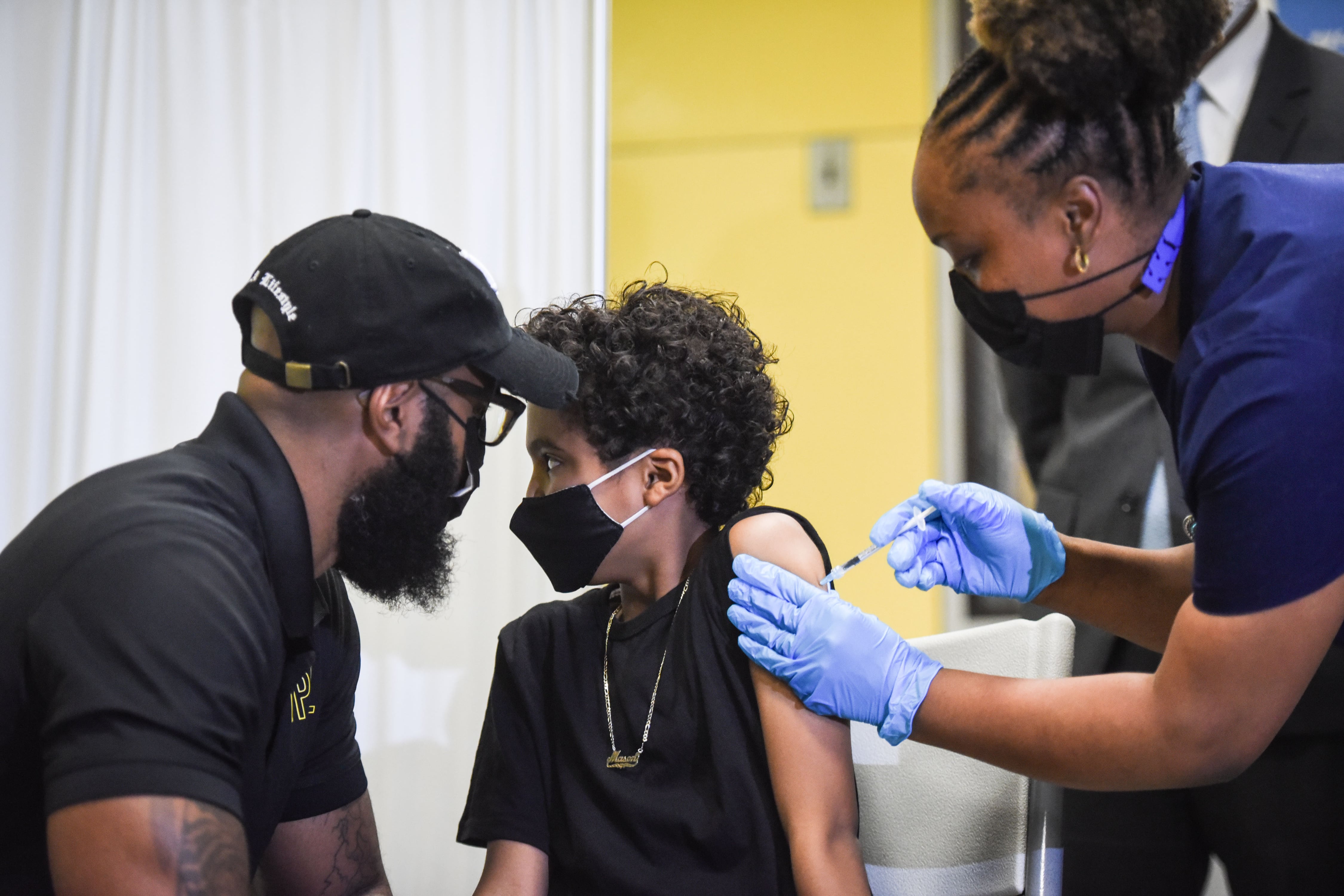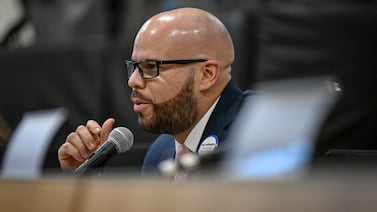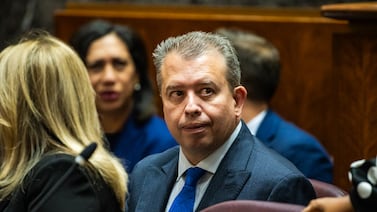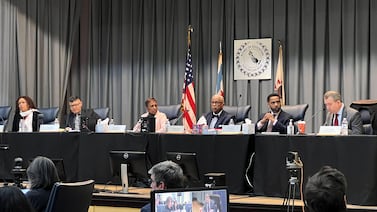When high school senior Michaell Santos logs into the online portal that the Bronx School for Law, Government and Justice uses to post grades, he can often find information about how to get the COVID vaccine nearby.
When his principal shares messages with the school community about how to stay safe during the pandemic, getting vaccinated is often included.
And, if students are looking to participate in extracurriculars, they can choose from a number of school-sponsored sports teams, all of which require vaccination to join.
Combined with a history of strong leadership — the current chancellor, David Banks, and his immediate predecessor, Meisha Porter, were both principals there — all of that may help explain why Santos’ school has a higher vaccination rate than others with similar demographics. Almost 66% have been fully vaccinated there.
That’s compared to 44% at other campuses where most students are Latino, according to a Chalkbeat analysis of city data. It also is an outlier compared to other schools that serve more low-income students than the citywide average of 73%. In those schools, fewer than a third are vaccinated, on average.
“I think it’s just an important message to put out like, ‘Hey, if this is a choice you do want to make, here’s how to get it,’” Santos said. “The messaging was there, and the resources were there, not in like, a forcing manner.”
Understanding why certain schools have higher vaccination rates could be critical as New York City’s education department and public health officials are renewing efforts to get more students vaccinated to address gaping disparities. Mobile units began visiting schools again on Monday, following an initial push in the fall when younger children first became eligible for the shots. The city aims to open 20 pop-up clinics a day for the next three weeks in areas where vaccination rates remain low.
An uphill battle
City data show it will be a steep climb in some communities. While about 53% of students have been vaccinated as of early March, rates are markedly lower in certain schools. For example, those where most students are Black have about 35% vaccinated, on average.
When it comes to grades served, the lowest rates are in elementary schools, where students haven’t been eligible for vaccines for as long, and only 34% have gotten the shots. Schools serving grades six through 12 had the highest average: 63%.
There were wide ranges based on how schools admit students. Middle and high schools with selective admissions standards average 73% of students vaccinated, a Chalkbeat analysis found. These schools also tend to have plugged-in families and offer robust programming, like band and sports, that might require vaccines. At the opposite end, only 33% are vaccinated at transfer schools, which cater to high schoolers who have fallen behind on credits.
A recent national study by the Centers for Disease Control and Prevention showed that 92% of children ages 5-11 now live near a vaccination site. Yet despite widespread availability, vaccination has plateaued. The CDC study said lagging rates may be explained by persistent vaccine hesitancy among parents, and point to a “need for alternative convenient, trusted vaccine access points.”
Jason Autar, a leader of the nonprofit Oyate Group, said those access points could be schools — calling them “trusted entities within the communities.”
Oyate Group has been spearheading vaccination campaigns in the South Bronx and Washington Heights, including helping organize pop-up clinics in a handful of schools. But interest has waned so much that the group is now ending its vaccination campaign.
When city schools held pop-up vaccine clinics in November, shortly after children ages 5-11 became eligible, almost 60,000 students got vaccinated, according to education department officials. In October, the New York chapters of the American Academy of Pediatrics pushed for a vaccine mandate for students. While New York City Mayor Eric Adams has signaled he’s open to the possibility of such a requirement, he has also steadily peeled back other COVID restrictions in recent weeks.
There are, however, vaccine mandates to participate in many of the types of activities that make school a draw for some students. Playing on a sports team requires vaccination. So does participating in “high-risk” activities after-school like performing in a band or singing in a choir. As does going to prom or on overnight school-sponsored trips. (Field trips and visits within the tri-state area do not require vaccination. Nor does participating in high-risk activities that take place during the school day, according to the education department.)
‘We shared our stories’
At Frederick Douglass Academy VII in Brownsville, Brooklyn, almost 53% of students are vaccinated. That’s significantly higher than the overall average student rate in Brownsville’s District 23, where only 38% had gotten the shots by early February. The vaccine rate at the school, also known as FDA, is also more than 10 percentage points higher than another high school that shares the same building.
What could help explain FDA’s higher numbers? For one, students there are starting to take trips again, something that has been a big part of what makes the school unique. Last week, students went on their first overnight visit, to Washington, D.C. When permission slips went out, Principal Tamika S. Matheson said a few students asked why they didn’t get one. Staff explained privately that only those who were vaccinated could go. A few got their first dose hoping to join, Matheson said.
“Now I have a little wave, a trickle of kids who are aware that we can take trips,” she said.
Matheson has also made it clear to her students and their families that she supports getting vaccinated against COVID, through conversations she called “respectful,” “not combative,” and “discreet.”
She made sure her families could turn to the school, working with the parent coordinator, to secure vaccination appointments back when they were still difficult to come by. In virtual town hall meetings with the school community, she and her staff shared their own stories of getting vaccinated. She told of her own hesitations to get her young daughter vaccinated and even let a concerned employee hold up a magnet to her body — disproving a widespread false claim that the vaccine made people magnetic.
“We didn’t push and encourage people to get vaccinated, but we shared our stories,” Matheson said. “And I think that was important.”
Thomas Wilburn contributed data analysis.
Christina Veiga is a reporter covering New York City schools with a focus on school diversity and preschool. Contact Christina at cveiga@chalkbeat.org.





